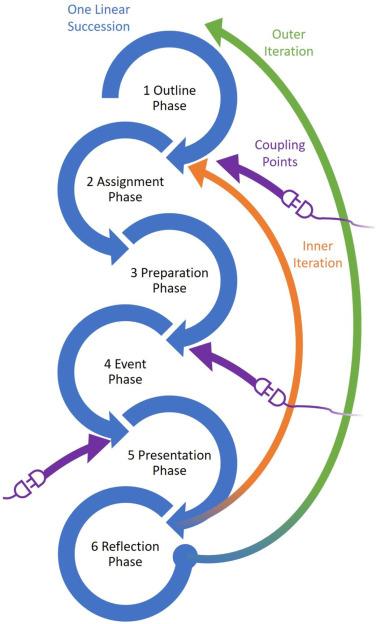Overcoming Challenges in Integrating VR/AR into Curricula: Practical Solutions for Modern Classrooms
Introduction
Virtual Reality (VR) and Augmented Reality (AR) are revolutionizing education, offering immersive and interactive experiences that enhance student engagement and learning outcomes. However, integrating VR/AR into curricula presents unique challenges for educators and schools. In this comprehensive guide, we will explore these obstacles and provide practical solutions and strategies for seamlessly embedding VR/AR technologies into modern classrooms. Whether you’re an educator, administrator, or tech enthusiast, you’ll gain valuable insights to unlock the transformative potential of immersive technologies in education.
The Benefits of Integrating VR/AR into Curricula
- Enhanced Engagement: Interactive lessons captivate students and make abstract concepts tangible.
- Improved Retention: Experiential learning through VR/AR boosts memory and understanding.
- Differentiated Instruction: Tailored experiences address diverse learning styles and needs.
- Safe Exploration: Students can experiment and learn in risk-free virtual environments.
- Career readiness: Exposure to cutting-edge tech prepares learners for future professions.
Despite these clear advantages, the journey to implementing VR/AR can be daunting. Let’s investigate the main challenges and how to overcome them.
Common Challenges in Integrating VR/AR into the Classroom
- High Initial Costs: Purchasing VR/AR hardware and software can strain budgets, especially for underfunded schools.
- Limited Teacher training: Manny educators lack experience or confidence in using immersive technologies effectively.
- Technical Barriers: Infrastructure limitations, device compatibility, and network bandwidth can impede smooth integration.
- Curriculum Alignment: Developing or adapting content that meets curriculum standards and objectives is a notable challenge.
- Equity and Accessibility: Ensuring all students have equal access for an inclusive learning surroundings remains a concern.
Practical Solutions for Overcoming VR/AR Education Integration Challenges
1.Leveraging Grants and Funding Opportunities
- Apply for educational technology grants from government initiatives such as the U.S. Department of Education’s Office of Educational Technology or global organizations like VR First.
- Partner with local businesses and tech companies for sponsorship and equipment donations.
2. Stepwise Implementation and Hardware Sharing
- Start with a pilot program, such as a VR/AR classroom kit shared across different classes or subjects.
- Use affordable options such as Google Cardboard or smartphone-based AR to lower the investment barrier.
3.prioritize Teacher Training and Professional development
- Organize hands-on workshops and online courses tailored to varying skill levels.
- Designate a VR/AR technology champion in your school—a trained educator who coaches colleagues and pilots new tools.
- Tap into online educator communities like Edutopia and Virtual Lab School for resources and peer support.
4. Invest in Scalable and User-Kind Technologies
- Choose versatile devices that support multiple apps and content formats, such as oculus Quest or tablets with AR capabilities.
- Ensure seamless interoperability with existing classroom technology, minimizing downtime and frustration.
5. Develop or Curate Standards-Aligned Content
- Utilize open educational resources (OER) and repositories, such as CoSpaces Edu and Merge EDU, which offer standards-aligned content.
- Collaborate with experienced curriculum designers or participate in teacher-led content creation programs.
6. Foster Digital Equity and Accessibility
- Provide loaner devices for students lacking personal equipment.
- Choose software and platforms that meet universal design for learning (UDL) and accessibility standards, offering support for students with disabilities.
Case studies: Successful VR/AR Integration in Schools
Springfield Middle School, Illinois: Redefining Science Labs with VR
Faced with budget cuts in their lab programs, Springfield Middle School adopted a set of VR headsets to simulate biology and chemistry experiments. Through strategic partnerships and phased purchases, the school implemented:
- Pilot programs in 7th-grade science, achieving a 21% increase in student science assessment scores.
- Monthly teacher training workshops for seamless curriculum adoption.
- Collaboration with a local university’s ed-tech department to create custom VR lab modules.
London Academy: AR-Powered History Lessons
At London Academy, history teachers integrated AR-based apps to bring ancient civilizations to life. This initiative involved:
- Utilizing free AR platforms compatible with students’ mobile devices.
- Creating interactive scavenger hunts and virtual field trips mapped to the UK national curriculum.
- Inclusive strategies—such as screen reader-compatible AR content—ensuring every student coudl participate fully.
Educator Testimonial
“Implementing VR in our science curriculum was initially intimidating, but the support from our administration and community partners made a world of difference. Once teachers saw how engaged students became, they were eager to learn and integrate more immersive content.”
– Emily Carter, Science Department Head, Springfield Middle School
Practical Tips for a Smooth VR/AR Integration
- Start Small: Run a focused pilot in one subject or classroom before scaling up.
- Engage Stakeholders: Involve parents,administrators,and IT staff early in the process.
- Prioritize Accessibility: Confirm all content and devices accommodate students with varying abilities.
- Continual Assessment: Regularly evaluate the impact with student feedback, performance data, and teacher input.
- Encourage Student-Led Exploration: Allow students to create their own AR/VR projects, fostering ownership and creativity.
Conclusion: Unlocking the Full Potential of Immersive Learning
Integrating VR and AR in education marks an exciting step forward for modern classrooms, promising rich, interactive, and inclusive learning experiences. By addressing common challenges—cost, training, technical barriers, curriculum alignment, and equity—schools can build a solid foundation for successful VR/AR implementation. With carefully planned strategies, support from the broader community, and a commitment to professional development, immersive technology can empower both teachers and students. Now is the time to embrace the future of education—one virtual leap at a time.

